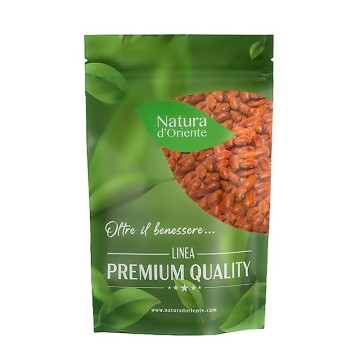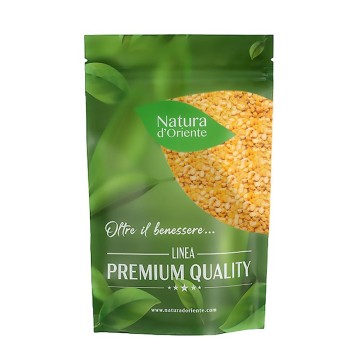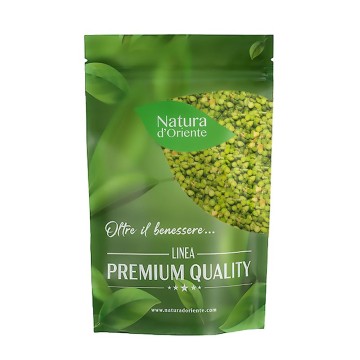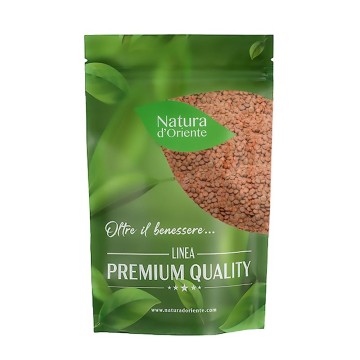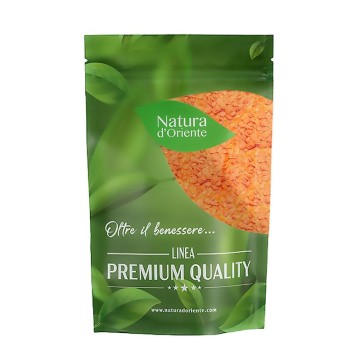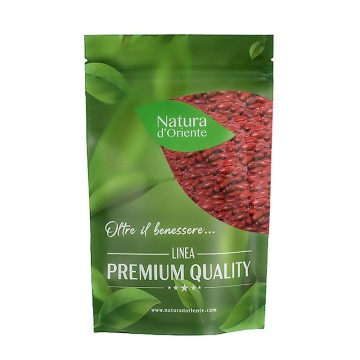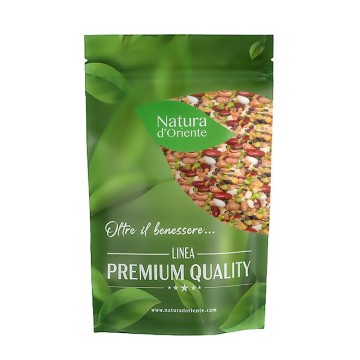This variety of beans gives the palate a sweet taste, a floury texture , and various substances beneficial for our body. They are legumes very rich in proteins, starches, minerals such as iron and phosphorus, in addition to vitamins of Group B (B1, B2 in particular).
Brown Beans: properties and benefits
Pleasant to look at with their intense red color , Brown beans are also very beneficial for our health, thanks to the richness of proteins, soluble fibers (and insoluble), folate (vitamin B9), magnesium, potassium and a host of other nutrients.
Like many legumes, Brown Beans are a healthy source of protein - vital elements for many bodily processes, including tissue building and repair.
Proteins build muscles, skin, hair and nails, so it is essential to follow a diet where they are always present, and are quality proteins, such as vegetable ones. We know that they are made of strands of amino acids, which can be non-essential (amino acids produced by the human body) or essential (obtained from food). A complete protein contains all essential amino acids in the right proportions to support biological functions in the human body.
In addition to proteins derived from animal foods (meats, seafood, dairy products), the completeness of proteins can come from the combination of brown beans with rice or cereals.
Eating a meal consisting of red beans and grains provides complete protein, and is a cholesterol-free meal, as opposed to animal sources of cholesterol-rich protein.
Studies have long been conducted on the benefits of beans , in particular on the protective properties for cardiovascular well-being, of legumes rich in folate (vitamin B9) such as brown beans.
Folate deficiency has been linked to increased heart risk, as vitamin B9 also helps eliminate homocysteine, a toxic substance that can lead to arterial damage.
On a digestive level, we know that the soluble fiber contained in red beans contributes to the well-being of the intestinal tract. It forms a gel-like substance, which facilitates bowel movement and prevents constipation.
In addition, these fibers bind with bile, which contains LDL (bad) cholesterol, and facilitate its expulsion from the body.
The health benefits deriving from the consumption of brown beans are also due to the presence of antioxidants . These substances have anti-aging and protection properties for the well-being of cells, limiting the damage caused by free radicals (environmental factors, unhealthy foods, smoking, etc.). Antioxidants also help protect the skin.
Brown beans, in particular, contain many flavonoids, one of the most important classes of antioxidants. Above all, they are rich in proanthocyanidins (also known as condensed tannins), beneficial for microcirculation and blood circulation, in greater quantities even than blueberries and small red beans.
Those who add these legumes to the diet must also consider among the advantages the fact that the fibers, proteins and complex carbohydrates in Brown beans help stabilize blood sugar levels . An important factor for diabetics, or for people who want to diet against the risks of insulin resistance, hypoglycemia or diabetes.
When blood sugar levels are stable, the pancreas releases less insulin.
One of the tasks of insulin is to promote the accumulation of fat in the body, so keeping its levels low can also help you lose weight.
The blood sugar stabilizing effects of brown beans can help obese and overweight people who want to follow a healthy and slimming diet.
Origins and History of cultivation
The bean plant is Phaseolus vulgaris, a legume from Mexico and Central America - according to some scholars, however, from Peru. The species that was used in the Mediterranean until the discovery of America was the African one Vigna unguiculata (cowpea, a dark dot at the point of insertion of the pod).
American varieties, including Brown Beans, were soon more cultivated than this previous one, due to the higher yield and ease of cultivation.
This high quality and inexpensive source of protein has become a staple in almost all world cultures, and today the production of beans ranges from Asia to Europe , in South and North America.
The consumption of beans, however, was already in our diet in Greek and Roman times, and in the Middle Ages with the so-called black-eyed beans. Historically, it was used in combination with cereals, which represented a protein substitute for meat - which in Italy has become the classic pasta and beans.
After the spread of the American bean, many varieties (over 14,000) were produced, including Brown Beans.
This bean is a variety of the common plant, and is often confused with other red beans, such as adzuki beans or pinto beans.
There are several classifications of brown beans in the world, including red kidney beans (also known as rajma in India), light red (spotted) beans, and dark red kidney beans spotted.
Plant and Fruit
The red bean plant is a variety of Phaseolus vulgaris L. and is part of the legume family, the Fabaceae. It is an annual plant that is easy to grow and quite hardy. It is grown in many countries around the world to obtain the seeds (beans) that grow in pods.
It has also been used for many centuries in crop rotation, because it enriches the soil with nitrogen. Like many legumes, it has the ability to fix nitrogen from the air to the soil, through a symbiotic relationship with the bacteria housed in the roots.
The plant is endowed with many varieties, with diversity of colors, textures and flavors.
There are varieties with a long vegetative cycle, sown in spring, and others with a shorter cycle in summer and harvested in autumn. Autumn harvests make beans more tender and flavorful, as the pod has undergone temperature changes.
Brown beans are part of the Phaseolus vulgaris, they are dark red, about 1 cm long, with a traditional "kidney" shape and a hard coating - generally shiny.
The plant is bushy, and each pod holds up to ten beans when ripe, so it offers a big yield for its size.
Nutritional values of brown beans
The best thing about these beans is that they are a valuable source of several nutrients. A portion of 100 grams provides 286 kcal, lower than other legumes . Furthermore, it contains neither excessive carbohydrates nor fats (2.1%), proteins (20.4%) and fibers (about 15%).
Among the mineral salts are present in Brown beans, some moderate levels of calcium (about 83 mg), iron (about 5 mg), potassium (about 1300 mg), magnesium ( about 50 mg), copper (about 0.30 mg).
By consuming Brown beans, you assimilate mainly B vitamins, such as thiamin (about 0.2 mg), niacin, good doses of folate - vitamin B9 (about 200 μg), vitamin C (about 4 mg), vitamin K and vitamin E.
Beans also contain zinc, molybdenum and other elements useful for our health.
How to consume brown beans in the kitchen
These beans give the palate a delicate, sweet flavor and a floury texture for those looking for a full-bodied legume in their recipes. Brown beans are suitable for creating pasta dishes, soups , and are very popular as a satiating side dish - even with just a drizzle of olive oil. In international cuisine, brown beans are used in chili con carne , in brown bean and rice dishes, with soups in Indonesia, with bean stew in the Middle East.
Remember that this dried variety must be soaked before cooking, for about 6 hours before cooking, which will be 1 hour.
Recipe with Brown Beans: Bean and Pumpkin Stew
Ingredients: 1 tablespoon of olive oil - 1 finely chopped red onion - 2 cloves of garlic - ¼ teaspoon of minced ginger - ½ teaspoon of ground cumin - 1 teaspoon of cumin seeds - 1 teaspoon of coriander
![]()



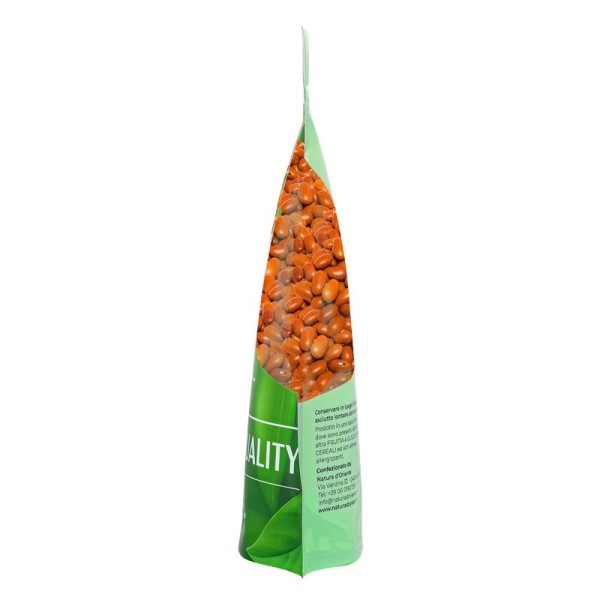





 No reward points for this product.
No reward points for this product.
